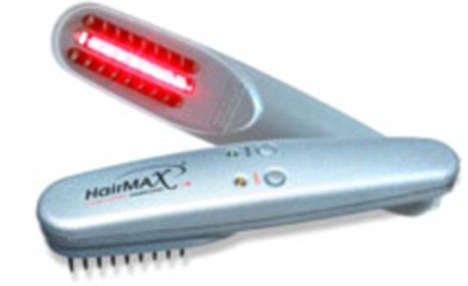Many people feel anxious when they realize that they are losing hair due to pattern baldness. There is a strong sense of urgency when it comes to finding a solution. However, this state of mind commonly results in scenarios where a considerable amount of money is spent on disappointing results.
How Hair Restoration Using Laser Technology Supposedly Works
The New York Times asked Sandy Tsao, a professor of dermatology at Harvard Medical School about the use of lasers for hair growth. Although she is skeptical of this claim, she briefly described the origins of this form of treatment. In certain reported cases when lasers were used to remove hair, new growth was seen. This phenomenon was then developed into a procedure that became marketed aggressively. It was even reported on Dateline NBC back in 2005.
The term “photobiostimulation” was coined to help explain how laser hair restoration is supposed to work. Low impact energy from the laser is applied to help stimulate the follicles and trigger active growth phases. This will not reverse the state of follicles that have reached the final stage of miniaturization. But there is a chance that the structures which are in the process of decline can regain some vitality.
Laser hair restoration combs have been marketed as an FDA approved tool that can be used at home. They are also supposed to work by stimulating the follicles as way to help rejuvenate them. However, they have only been approved for safety, not for their effectiveness.
Using Lasers For Inserting Hairs Into the Recipient Area
Another application of lasers for hair restoration (which became enormously popular in the mid- 1990s) is to create slits (in the bald recipient areas) that will receive the inserted graft. However there are a few challenges:
(1) This method claims to be bloodless (by sealing off the blood vessels with heat). However, the goal of reducing blood in the treatment area is counter to the objective of ensuring graft survival. In order for new grafts to thrive, circulation is important for the supply of oxygen.
(2) Wounding the skin with laser will damage collagen and elastin. These protein fibers contribute to firmness and skin elasticity. Damage to these components increases the risk that the grafts will fall out.
Basic Perspectives
The idea of using lasers for restoring hair may seem impressive and promising. But what is this technology actually accomplishing? Many treatments intend to help hair grow by stimulating the follicles, or helping to increase the supply of blood to these hair structures. However, it is important to keep in mind that male pattern baldness is caused by weak protein receptors on the follicles which are sensitive to the effects of DHT. Stimulating the follicles is a nebulous concept in the context of DHT’s role in causing hair to fall out.
Besides considering how lasers are supposed to work to fight hair loss, evidence of results should also be something to think about. Before and after images through photos or videos is a helpful way of determining whether a treatment is hype or truly effective.

To watch this patient’s video, click here.
https://www.dermhairclinic.com/theradome-laser-female-hair-loss-treatment/
